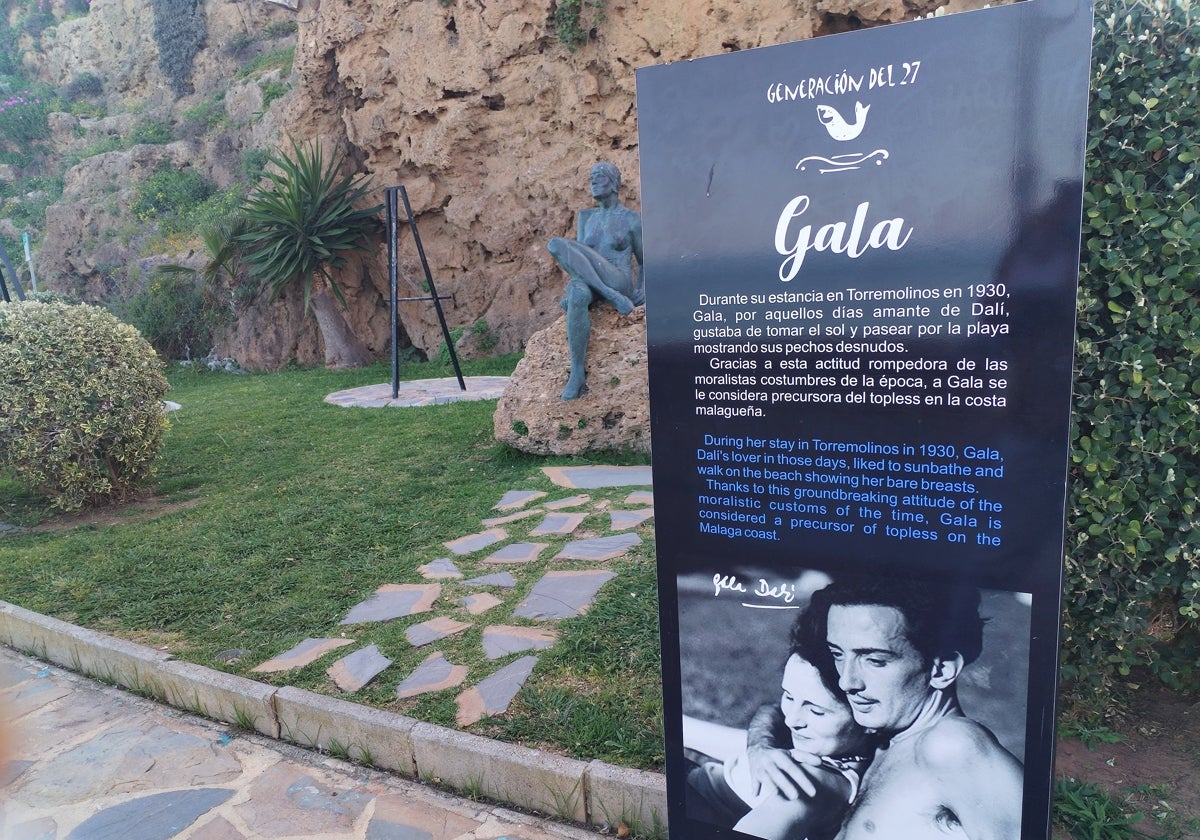Salvador Dalí and his connections with Andalucía
120th birthday ·
The artist spent holidays in the south of Spain, became friends with prominent Andalusians and his artwork is exhibited along the Costa del SolAlekk M. Saanders
Friday, 10 May 2024, 18:16
The world remembers Salvador Dalí for his technical mastery, precise drawings and the striking and whimsical imagery of his works. Born 120 years ago this week, on 11 May 1904, in the Catalan town of Figueres, he studied fine art in Madrid, where he met Andalusian poet Federico García Lorca in 1923 and with whom he developed a strong friendship during their student years.
It is believed that Lorca was struck by Dalí's unconventional way of dressing, and that the painter was impressed by the successful poet. There were many rumours about their relationship: historians claim that Lorca was in love with Dalí, which only caused resentment on the part of the Catalan artist.
In a later interview, Dalí denied that their relationship ever turned physical, although he did confirm Lorca's special feelings for him. When the surrealist short film Un Chien Andalou (An Andalusian Dog) - a collaboration between Dalí and film director Luis Buñuel - was released, Lorca took it personally, though their friendship continued all the way until the poet's assassination in 1936.
In a later interview, Dalí denied that their relationship ever turned physical, although he did confirm Lorca's special feelings for him
Salvador Dalí also met another Andalusian, Picasso, on his first trip to Paris in 1926. It is thought that Dalí revered Picasso and that he strongly influenced some of his later works.
His work on the Costa
Incidentally, Picasso and Dalí once 'met' in Mijas - or rather their works did - when the Centre for Contemporary Art (CAC) was established in the famous white village, featuring its Remedios Medina collection with several dozen works by the two artists.
Marbella is another tourist town in Andalucía famous for housing Dalí's bronze sculptures on Avenida del Mar, such as Man on Dolphin, Sitting Don Quixote, Nude Woman Climbing Stairs, Space Elephant, Horse with Stumbling Rider, Gala Staring out of a Window, Mercury, Gala Gradiva, and Perseus.
These sculptures, however, have all but caused some controversy. In 1988, the Izquierda Unida party claimed that they were forgeries and had been constructed from bronze moulds made at the Bonvicini foundry in Verona, without Dalí's direct involvement. However, the then mayor of Marbella, Jesús Gil, insisted on their authenticity and was prepared to pay out of his own pocket if a panel of experts proved otherwise.
Fewer people know that Puerto Banús is home to one of Dalí's sculptures, Rhinoceros Dressed in Lace (1956)
In any case, Dalí's sculptures have become an icon and point of attraction for the town. However, fewer people are aware that Marbella is also home to another one of his sculptures in Puerto Banús, entitled Rhinoceros Dressed in Lace (1956). The artwork, based on his film The Prodigious Adventure of the Lacemaker and the Rhinoceros, weighs three tonnes and was donated to the town in 2004 in honour of Dalí's birthday.
Honeymoon in Torremolinos
In the spring of 1930, Dalí spent his honeymoon with wife Gala in Torremolinos, a place that was thought to be recommended to him by his friend and Malaga surrealist artist José María Hinojosa. There is even an anecdote that Hinojosa, who came from a wealthy family, promised to buy one of Dalí's paintings, the cost of which would surpass his stay in Torremolinos.
However, sources dispute where the couple actually stayed In Torremolinos: according to some, they had a room in the recently opened El Castillo del Inglés hotel, though others state that they rented a house near the beach. This house supposedly had two rooms - a large one that was used as the artist's studio and a small one that served as the bedroom. The house's main feature was its natural terrace, where they dined and hosted the likes of José María Hinojosa and Emilio Prados, editor of the magazine Litoral.
One of their meetings was devoted to the creation of a new magazine that would be the organ of Spanish surrealism. Yet, the revolutionary character that Dalí and Prados wanted to give the magazine undoubtedly frightened Hinojosa, who withdrew his financial support. The project never came to fruition.

Dalí and the Eurovision Song Contest
Dalí's 120th birthday coincides with the Eurovision Song Contest in Sweden. Few people know that Salvador Dalí has a connection with the popular event. In 1969, Spain hosted the Eurovision Song Contest for the first time. It was also the first time Spain broadcast the programme live in colour, which forced TVE to invest in the best audiovisual technology. Apparently, to ensure that everything was of the highest standard, Salvador Dalí was appointed as the author of all advertising related to the Eurovision Song Contest, including creating a poster to publicise the event. This was strongly criticised by European intellectuals, as the artist, who in his youth had been associated with anarchism and communism, was then collaborating with the dictatorial regime.
Where to celebrate
Some say that the best place to feel Dalí's presence in Andalucia is The Dalí Cinema located in Dos Hermanas, Seville. The restaurant was created by the Gil Serrano brothers a year and a half ago. They were so inspired by the surrealist painter that they decided to open a restaurant in his honour, with its curious aesthetic, original dishes and chairs, umbrellas, colourful objects and paintings and even hands hanging from the ceiling.
